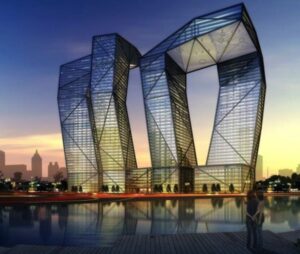
The Core Principles of Vertical Design in Modern Construction
Indeed, vertical design construction is a critical phase in the development of any building project, focusing primarily on the elements that rise above the ground. This type of construction encompasses a variety of structures including residential buildings, office towers, skyscrapers, and other commercial or institutional buildings. It is essential to recognize the unique challenges and complexities associated with vertical design construction. These projects demand meticulous planning, superior engineering skills, and advanced technology to ensure structural integrity and safety.
Vertical construction must also consider factors such as wind resistance, seismic activity, accessibility requirements, and efficient use of space. Effective project management is crucial in this context to coordinate the numerous stakeholders involved—from architects and engineers to contractors and regulatory bodies. Adhering strictly to timelines and budgets while maintaining high standards of quality is non-negotiable.
Sustainability practices must be integrated into the construction process. This includes using eco-friendly materials, implementing energy-efficient systems, and designing for long-term environmental impact reduction. By addressing these critical aspects with precision and foresight, we can achieve successful outcomes in any vertical design project. In conclusion, vertical design construction is not merely about building upwards; it’s about doing so responsibly while pushing technological boundaries to meet contemporary demands for functionality, aesthetics, safety—and sustainability.
Here’s a comprehensive breakdown of what vertical design construction involves and why it’s distinct from horizontal construction:
Scope and Focus:
Vertical design construction is primarily concerned with the creation and assembly of the vertical elements of a structure, such as walls, windows, doors, and roofs. This phase turns architectural visions into tangible realities, emphasizing aesthetics, durability, and functionality of the building.
Specialized Skills and Techniques:
The construction techniques used in vertical design are often more specialized than those in horizontal construction. It requires expertise in areas such as steel frame construction, reinforced concrete, and advanced facade engineering. Each building element must adhere to rigorous standards for safety, energy efficiency, and environmental impact.
Engineering Challenges:
Vertical construction must address various engineering challenges such as load distribution, wind resistance, and seismic activity. The taller the building, the more complex these challenges become. Engineers and architects must collaborate closely to ensure that the structural integrity and longevity of the building meet all required standards.
Regulatory and Compliance Issues:
Vertical construction projects typically face strict regulatory scrutiny, especially in urban environments. Compliance with building codes, zoning laws, and environmental regulations is critical. These projects often require a myriad of permits and inspections to ensure everything from fire safety to accessibility standards are met.
Impact on Surroundings:
Unlike horizontal construction, which often spans large, sometimes isolated areas, vertical construction usually takes place in densely populated settings. This imposes additional responsibilities on project managers to minimize disruption to nearby businesses and residences, manage logistics efficiently, and ensure safety for both construction workers and the public.
Sustainability Considerations:
Modern vertical design construction places a high emphasis on sustainability. This involves the selection of eco-friendly materials, integration of energy-efficient systems, and implementation of green building practices. The aim is to reduce the environmental footprint of buildings and contribute to more sustainable urban development.
Aesthetics and Innovation:
Vertical construction gives architects and designers the opportunity to push the boundaries of aesthetics and innovation. The visual impact of a building within its skyline is a major consideration, driving the adoption of new materials and technologies to achieve both functional and design goals.
Some of the examples of Vertical design construction include:
- Building erection: Typically, vertical construction begins with building frames, which include walls, columns, and support structures.
- Interior and external elements: This includes installing both exterior and interior components, such as doors, windows, cladding, floors, roofs, and building systems.
- Specialized construction: In addition to erecting high-rises, towers, and other elevated structures, vertical construction can also involve crane towers, scaffolding, and lifts.
The foundation of vertical planning and city design is based on the notion that land is a limited resource. The ideal tall building design aims to accommodate the growing population within this limited land area and offers the following benefits – increased density, which can lead to more efficient use of infrastructure and public services. Tall buildings also support sustainable urban growth by reducing urban sprawl and preserving natural landscapes outside the city limits.
Vertical planning encourages mixed-use developments that integrate residential, commercial, and recreational spaces within a single structure or complex, fostering a vibrant community atmosphere. Additionally, tall building designs can significantly reduce transportation times and costs for residents by placing them closer to their workplaces and essential services.
This reduction in commuting distances helps lower carbon emissions and supports environmental sustainability goals. In summary, the strategic implementation of vertical planning not only addresses the challenges posed by limited land resources but also promotes economic efficiency, environmental stewardship, and enhanced quality of life for urban dwellers. It is imperative that we continue to innovate in this field to meet the demands of our rapidly growing cities while maintaining a commitment to sustainable development practices.
In essence, vertical design construction is all about rising upwards, creating structures that not only meet practical usage needs but also enhance the architectural appeal of urban environments. It’s a field that requires precision, innovation, and a deep understanding of both engineering and aesthetic principles to successfully bring projects from the ground up.

One thought on “The Complete Guide on Vertical Design Construction: Transforming Modern Architecture”